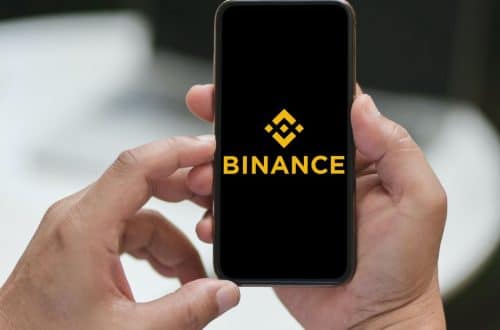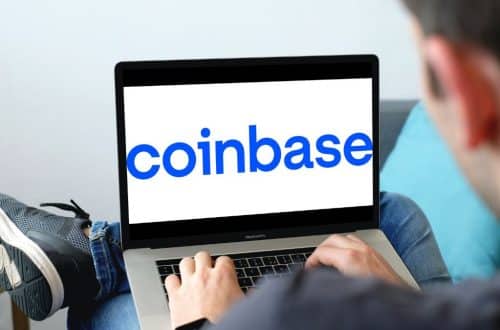
How to Mine Bitcoin
The introduction of bitcoins has redefined the psychology of money. With a significant increase in active bitcoin traders, the digital money system has gained a competitive advantage over fiat money. Bitcoin enthusiasts know the importance of bitcoin mining and understand how a year’s bitcoin mining worth can bring tremendous monetary rewards.
In the beginning, mining was easier but those that try it now, face more difficulties. Add to that, the fact that the bitcoin mining arena has become so filled with competitors, and you have a risky venture.
Mining isn’t all money in, it’s also money out. Those that are lucky enough to have plenty of cash reserves can afford the expense of setting up a rig, but many are not so lucky. You can no longer just pick up an old computer and start mining, first-timers to mining will find that you can burn through thousands of dollars a year, just trying to mine a single bitcoin.
Luck plays a part, but not the only part. Potential miners need to understand the complexity of the mining process. It isn’t the same animal that was launched back in 2009. But if you can afford it, mining for bitcoin is a lucrative opportunity
So, what exactly is bitcoin mining?
What Is Bitcoin Mining?
Bitcoin mining is a highly complex computing process that uses computer code and complex computations to create bitcoins. Secret codes are used to generate Bitcoin, facilitate Bitcoin transactions, and track bitcoin owner’s assets.
These are valid blocks of data that create a transaction record in the Bitcon’s public ledger. These blocks are called a blockchain, and they are a critical element of the Bitcoin network.
These blockchains are actually helping the system address what’s referred to as “the double-spend problem. This problem is a need to find agreement on historical transactions. Even though ownership can be proven via public-key cryptography, that can’t guarantee the same Bitcoin wasn’t used in another transaction – thus double-spent.
Top Approaches to Bitcoin Mining
Learning the fundamentals of mining is a key tool for beginners. A starting miner should have a working knowledge of relevant phrases like blocks, hash rate, etc. Your success or failure is mostly determined by your willingness to pick one of the following approaches, and your ability to stay with it until the end.
- Approach #1: Invest in mining equipment and set profits aside
- Approach #2: As part of a mining pool, combine mining resources
- Approach #3: Use cloud mining resources on a subscription basis
The problem is, they each have pros and cons. Which matters to you, really depends on what you’re trying to accomplish and how long you have to accomplish it.
To make an informed decision, let’s take a closer look at each approach.
Approach 1: Go Solo
Solo mining may be a riskier option since its profitability has fluctuated over time. Add to that, unexpected hardware costs and you have a constantly shifting plane of expenditures.
The same reasoning can be used for electricity expenses. Your energy rate will vary depending on your area’s price levels for this type of energy. Bitcoin mining calculators are a great resource to get an idea of how much money you might earn by investing in certain kinds of mining gear. CryptoCompare and Crypto Mining Tools are popular calculator services that calculate using the following parameters:
- Cost of hardware
- Efficiency of hardware
- Cost to Run Energy
- The difficulty of Bitcoin to be Mined
- Hash power of your network
- Price block award
When looking into this, be ready to provide details regarding each of the above, so you get a more accurate reading. The more reliable the data, the more reliable the result.
Keep in mind, where you mine matters as well. Some countries have a better ratio of investment/gain, so this should be considered before buying any hardware. As it stands, China is leading the global market in mining since energy costs are so cheap.
Is Solo Bitcoin Mining Worth it?
Going solo with bitcoin mining is not for the faint of heart. The main draw is that, if you are on your own, you get the benefit of keeping your gains. However, to make it worthwhile, it may come with the requirement to purchase hundreds of pieces of specialist mining equipment, or a mining rig, as part of the original investment.
This also means you will need to find sufficient energy to source your mining rig, if you want to compete with other individual miners and those who use mining pools.
Given the current cryptocurrency landscape, an exchange may seem like a safer option, since personal mining rigs require extensive knowledge about mining hardware requirements. CPUs, GPUs and FPGAs that were fine in the beginning, have now been made obsolete by ASICs. These application-specific integrated circuits are tailor-made for mining.
If you do decide to build a solo rig, you should consider the following first:
- Do you have space for a rig? Keep in mind it will have to be temperature-controlled.
- Which motherboard, GPU, processor, RAM, and storage devices should you choose? Considering they all affect your price/performance ratio, this must be considered out of the gate.
- Do you have enough energy supply? Or for that matter, can your power supply hardware meet the demands you need to run the mining rig?
Once you’ve considered these points, keep an eye out for bitcoin mining software. With all of the decisions, you’ll make setting up your first rig, is a much easier prospect. Options like Bitcoin Miner, BTCMiner, CGMiner, and EasyMiner are all leaders in this field.
Approach 2: Pool Your Resources
Joining a mining pool is another option for a potential bitcoin miner, and it differs from solo mining in that it is less expensive and more accessible. A mining pool is a collection of miners that pool their computer and processing capacity and split the rewards. Members of such pools have to pay a fee, but the total expenses of mining a single block are a fraction of what it would cost if you did it alone. At the same time, joining pools relieves a miner’s load in rig mining capacity and the need to satisfy power needs.
Conditions to join solo mining:
- Obtaining access to a mining rig
- Mining software that works
- Fans for cooling
- Units that provide power
- Wallet for Bitcoin
- Connection to the internet
Top Considerations Before Joining a Pool
Selecting the best pool for one’s mining requirements vary depending on the following criteria:
- Pool Size
Reason says, larger pools will have more miners and give higher odds of obtaining a BTC pay-out, so they may be a favorable option. But don’t forget, the profits have to then be split across all of those miners. Sure, pay-outs may be lower, but they are more consistent in larger pools.
- Fees Charged
In exchange for use of their ready-made infrastructure and coordinating mining efforts, mining pools collect fees. It takes the form of a percentage that is taken off your earnings before you are paid out. These are called eCuts and they typically range from 1% to 3%. While choosing a low-budget pool may seem to be a no-brainer, miners should be wary of those boasting 0% commission fees. Double-check the validity of any offer that seems too good to be true.
- Minimum Payment Threshold
Really this means there are restrictions placed on the lowest threshold that has to be reached before a pay-out is available. This threshold varies among services. If you are new to the game, you should probably stick to a lower minimum payment, that way you can easily enjoy the fruits of your labor.
No matter how you look at it, joining a pool can be a good option for a beginner to have the chance to wet your feet without taking on too much of the risk. Keep an eye out for how long a pool has been around before you commit, as some may be ghost companies or scams. Some of the more reputable mining pools include AntPool, Slush Pool, BTC.com, F2Pool.
Approach 3: Take it to the Cloud
Using a cloud-based mining system is the third alternative for budding bitcoin miners. Basically, you are paying to have a remote center mine BTC for you. This approach has certain benefits in that you don’t have the extensive costs associated with running and repairing a mining rig. Instead, the data center charges you a fee, which decreases your profit but provides a fixed rate of return on investment.
As with other approaches, before you sign on and spend money, take time to do your research on the company. You’ll be glad you did if it helps avoid fraud.
A lot of newcomers may prefer this option, as it is one of the more hassle-free routes. After all,
- You don’t have the bother or expense of sourcing equipment
- You don’t have to worry about equipment break-downs
- You don’t have to have extensive knowledge about mining or bitcoin
In fact, these are very notable reasons why cloud-based mining may be a more approachable option to bitcoin mining for a novice.
The Bottom Line
Bitcoin mining can be lucrative, but there are always and up-front costs and potential losses to consider before you dive in.
Depending on your approach, you could expose yourself to varying amounts of risk. But that makes this venture similar to other financial investment decisions.
Like most financial decisions, proceed with caution and don’t take on more risk than you are willing to stomach. If you keep yourself abreast of new technologies, you will be a savvy investor if you do decide to mine for bitcoin.







